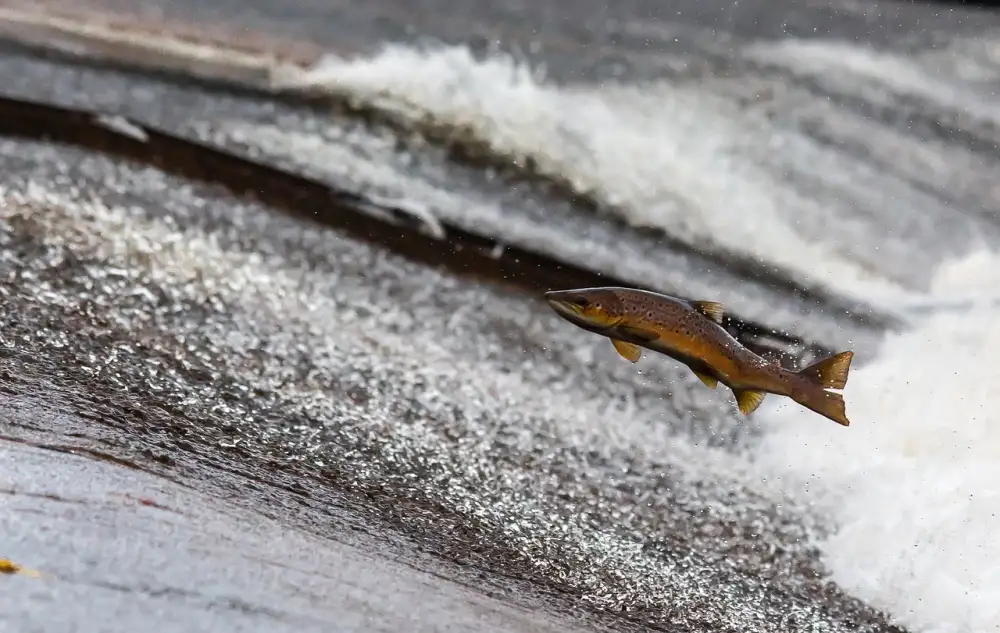Easy and Delicious: Baking Frozen Salmon to Perfection - A Step-by-Step Recipe Guide

Baking frozen salmon is a game-changer for busy individuals who crave a delicious and nutritious meal without the hassle of thawing. With frozen salmon readily available in most grocery stores, this method offers a quick and convenient solution for those short on time. Not only does it save precious minutes, but it also locks in the freshness and flavor of the fish. In this step-by-step recipe guide, we will show you how to effortlessly bake frozen salmon to perfection, ensuring a delightful dining experience every time. Get ready to savor the magic of easy and delicious baked frozen salmon!
Step 1: Preparing the frozen salmon
Before we start baking the frozen salmon, it's important to properly prepare it. Start by removing the packaging and placing the salmon on a clean cutting board. If there are any ice crystals or excess moisture on the surface, gently pat them dry with a paper towel.
Next, rinse the salmon under cold running water to remove any ice glaze that may have formed. This step helps to prevent the fish from becoming too watery during baking.
Once rinsed, carefully inspect the salmon for any remaining bones or scales. Using a pair of tweezers or fish bone pliers, remove any bones you come across. This ensures a pleasant dining experience without any unexpected crunches.
After removing any bones, it's time to decide whether you want to keep the skin on or remove it. The skin can add extra flavor and protect the flesh during cooking, but if you prefer skinless salmon, use a sharp knife to gently separate the skin from the flesh.
Now that your frozen salmon is prepared and ready for baking, let's move on to step 2: preheating the oven.
Step 2: Preheating the oven
Before we begin baking our frozen salmon, it is essential to preheat the oven. This step ensures that the salmon cooks evenly and retains its moisture. Set your oven to a temperature of 400°F (200°C) and allow it to preheat for about 10-15 minutes.
Preheating the oven is crucial as it helps create a hot environment that will cook the salmon quickly and efficiently. It also helps in achieving a crispy exterior while keeping the inside moist and tender.
Remember to adjust the temperature according to your oven's specifications, as some ovens may vary slightly in their heating capabilities. Using an oven thermometer can help ensure accuracy.
By taking this simple step of preheating the oven, you are setting yourself up for success in creating a perfectly baked frozen salmon dish that will impress your taste buds and those of your guests. So let's move on to the next step and prepare our delicious seasoning!
Step 3: Seasoning the salmon
Seasoning the frozen salmon is an essential step to enhance its flavor. Start by gently patting the salmon dry with a paper towel to remove any excess moisture. This will help the seasoning stick better to the fish.
Next, choose your preferred seasonings. Popular options include salt, pepper, garlic powder, lemon zest, dill, or a combination of these flavors. Sprinkle the desired amount of seasoning evenly over both sides of the salmon fillets.
Be mindful not to over-season as frozen salmon tends to be more delicate in flavor compared to fresh salmon. The goal is to complement and enhance its natural taste rather than overpower it.
Once seasoned, let the salmon sit for a few minutes to allow the flavors to penetrate into the flesh. This will result in a more flavorful and delicious end result when baked.
Remember that seasoning is subjective, so feel free to experiment with different herbs and spices based on your personal preferences. Just ensure not to go overboard and maintain a balance that complements the inherent taste of the salmon.
Now that our frozen salmon is properly seasoned, we are ready for the next step - placing it on a baking sheet.
Step 4: Placing the salmon on a baking sheet
Once you have seasoned the frozen salmon, it's time to place it on a baking sheet. This step is crucial as it ensures even cooking and prevents the salmon from sticking to the pan.
To begin, line a baking sheet with aluminum foil or parchment paper. This not only makes cleaning up easier but also helps to prevent the salmon from sticking to the pan.
Next, carefully transfer the seasoned frozen salmon onto the prepared baking sheet. Make sure to space them out evenly, allowing for proper air circulation during baking.
If you are using fillets or portions of frozen salmon, place them skin-side down on the baking sheet. This will help to keep the flesh moist and tender while allowing for a crispy skin.
For whole frozen salmon, position it with its back facing upwards on the baking sheet. This will allow for even cooking throughout and ensure that all parts of the fish are cooked to perfection.
Remember not to overcrowd the baking sheet as this can lead to uneven cooking. If necessary, use multiple sheets or bake in batches to maintain an optimal cooking environment.
By placing your seasoned frozen salmon carefully on a lined baking sheet, you are setting yourself up for success in achieving deliciously baked salmon that is both flavorful and perfectly cooked.
Step 5: Baking the frozen salmon
Once you have seasoned the frozen salmon, it's time to bake it to perfection. Preheat your oven to 400°F (200°C) and line a baking sheet with parchment paper or aluminum foil for easy cleanup.
Place the seasoned salmon fillets on the prepared baking sheet, making sure to leave enough space between them for even cooking. If you're baking a whole frozen salmon, position it in the center of the sheet.
Pop the baking sheet into the preheated oven and let the salmon cook for about 20-25 minutes. The exact cooking time may vary depending on the thickness of your fillets or size of your whole salmon.
Avoid opening the oven door frequently as this can cause temperature fluctuations and affect cooking time. Instead, rely on a timer or peek through the oven window occasionally to check on progress.
The high heat of the oven will gradually thaw and cook the frozen salmon, resulting in a moist and flavorful dish. The baking process helps retain its natural juices while infusing it with delicious seasonings.
Remember that overcooking can lead to dryness, so keep an eye on your salmon as it nears completion.
Step 6: Checking for doneness
After baking the frozen salmon, it is important to check if it is cooked to perfection. To do this, gently insert a fork into the thickest part of the salmon and twist it slightly. If the flesh flakes easily and appears opaque, then your salmon is ready. The internal temperature should reach at least 145°F (63°C) to ensure it is fully cooked. Remember that cooking times may vary depending on the thickness of the salmon fillet. If necessary, you can continue baking for a few more minutes until desired doneness is achieved. Avoid overcooking as it can result in dry and tough salmon.
Step 7: Serving and enjoying the baked frozen salmon
Once the salmon is cooked to perfection, it's time to serve and savor its delicious flavors. Carefully remove the baking sheet from the oven using oven mitts or tongs to avoid burns. Transfer the salmon onto a serving platter or individual plates.
Garnish with fresh herbs like dill or parsley for an added burst of freshness. Squeeze some lemon juice over the salmon to enhance its natural flavors. Serve alongside your favorite side dishes such as roasted vegetables, steamed rice, or a crisp salad.
The tender and flaky texture of the baked frozen salmon will surely impress your guests and leave them wanting more. Enjoy this hassle-free meal that combines convenience with incredible taste.
In conclusion, baking frozen salmon is a convenient and delicious way to enjoy this nutritious fish. With just a few simple steps, you can have a perfectly cooked meal without the need for thawing. The process of baking frozen salmon ensures that the fish retains its moisture and flavor, resulting in a tender and flaky texture.
By following the step-by-step recipe guide, you can easily prepare the frozen salmon for baking. Preheating the oven to the right temperature is crucial for even cooking. Seasoning the salmon with your favorite herbs and spices adds depth of flavor to every bite.
Placing the seasoned salmon on a baking sheet allows it to cook evenly and prevents sticking. Baking at the recommended temperature and time ensures that the fish is cooked through while retaining its natural juices.
Checking for doneness by using a fork or thermometer guarantees that your salmon is perfectly cooked. The flesh should be opaque and flake easily when tested.
Once your baked frozen salmon is ready, serve it hot with your choice of sides or on top of a fresh salad for a complete meal. The convenience of this method makes it perfect for busy weeknights or impromptu gatherings.
So why wait? Experience the magic of baking frozen salmon today - it's easy, delicious, and hassle-free!
Published: 24. 02. 2024
Category: Recipes



